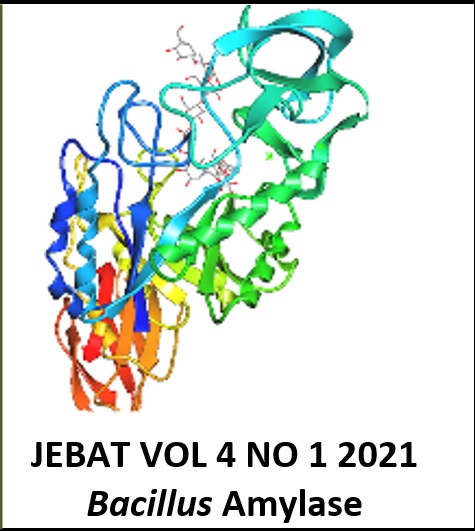Phytochemical Analysis and Antimicrobial Properties of Eugenia caryophyllata (Syzigium aromaticum L. Myrtaceae)
DOI:
https://doi.org/10.54987/jebat.v4i1.577Keywords:
Clove; Phytochemical; Antimicrobial; Staphylococcus aureusAbstract
This study is aimed at analyzing the phytochemicals and elucidating the antimicrobial properties of Syzygium aromaticum (Clove) which is one of the most popular and widely used spice that has been reported to possess high nutritional value, antimicrobial properties. 100% aqueous and 20:80% (water and alcohol) for hydroethanolic and hydromethanolic extracts were prepared. About 13 phytochemical compounds were detected qualitatively in all of the three different extracts which include phenolic compounds, tannins, ascorbic acid e.t.c. Sensitivity disc method was used to test the antibacterial and antifungal properties of Syzygium aromaticum (clove) was found that all pathogenic bacteria and fungus were inhibited by the Clove. Staphylococcus aureus was more sensitive with greater zone of inhibition of (12.33±0.88 mm) than the other bacteria. Candida albicans had no activity at concentration of 0.25 mg/mL in comparison with standard antibiotic (amoxicillin). The clove methanolic extract produced same zones of inhibition with amoxicillin (12.33±1.20 mm), which was used as a control and minimum inhibitory concentration was found to be 0.25 mg/mL for both gram positive and Gram-negative bacteria, respectively, and 0.5 mg/mL for Candida albicans.
Downloads
Published
How to Cite
Issue
Section
License
Authors who publish with this journal agree to the following terms:
- Authors retain copyright and grant the journal right of first publication with the work simultaneously licensed under a Creative Commons Attribution License (http://creativecommons.org/licenses/by/4.0) that allows others to share the work with an acknowledgement of the work's authorship and initial publication in this journal.
- Authors are able to enter into separate, additional contractual arrangements for the non-exclusive distribution of the journal's published version of the work (e.g., post it to an institutional repository or publish it in a book), with an acknowledgement of its initial publication in this journal.
- Authors are permitted and encouraged to post their work online (e.g., in institutional repositories or on their website) prior to and during the submission process, as it can lead to productive exchanges, as well as earlier and greater citation of published work (See The Effect of Open Access).

